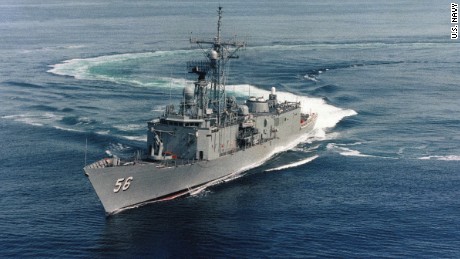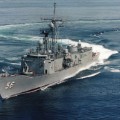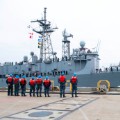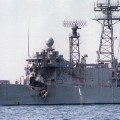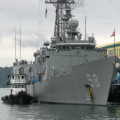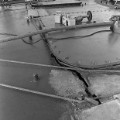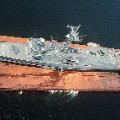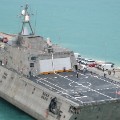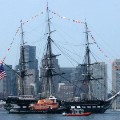Story highlights
- The USS Kauffman's deployment is the last for Oliver Hazard Perry-class frigates
- Perry-class frigates have been in the U.S. Navy for almost 40 years
- In the 1980s, attacks nearly sank two Perry-class frigates in the Persian Gulf
- Navy secretary says littoral combat ships will be the new frigates
(CNN)When the USS Kauffman steamed out of Norfolk Naval Station earlier this month, it marked the beginning of the end for an entire class of vessels in the U.S. Navy.
The Oliver Hazard Perry-class frigate will be the last of more than four dozen such ships to put itself in harm's way.
"I am honored and humbled to have this opportunity to lead such a capable and proud group of sailors on this, the final deployment of an FFG-7 class ship, and to be the last in a great line of frigate commanding officers," the Kauffman's skipper, Cmdr. Michael Concannon, said in a Navy statement.
The final mission for the Kauffman and its crew of 250 will be to combat drug trafficking in the U.S. Southern Command's area of responsibility, the waters of the Caribbean and off the coasts of Central and South America.
"What a fitting mission for this great ship and crew to leave as its final legacy, keeping drugs off the streets of America by stopping them at the source," Concannon said.
After it returns from the drug trafficking mission, the Kauffman will have spent more than 28 years in the U.S. Navy. It will be decommissioned in September and possibly put up for sale to an allied navy.
The first of the Perry class, the USS Oliver Hazard Perry, was launched in 1976. The Navy once had 51 of the Perry-class ships, which were up to 453 feet long and displaced as much as 4,300 tons. They enjoyed a reputation for toughness, especially after two suffered battle damage in the Persian Gulf in the late 1980s.
Perhaps the most famous of the Perry-class ships was the USS Stark, which survived a deadly attack in the Persian Gulf. Thirty-seven U.S. sailors were killed on May 17, 1987, when an Iraqi jet fired two Exocet missiles into the ship while it was on patrol during the Iran-Iraq war.
Less than a year later, another Perry-class frigate, the USS Samuel B. Roberts, was struck by an Iranian mine, wounding 10 of its crew, blowing a 15-foot hole in its hull and breaking the frigate's keel, damage that almost always sends a ship to the bottom. The crew of the Roberts, however, was able to save the vessel, in part by using heavy steel cables to tie cracked portions of the ship's superstructure together. The Roberts was then loaded onto another ship, the Mighty Servant 2, in Dubai and transported back to the U.S., ship on ship.
Both the Stark and the Roberts were eventually fully repaired and returned to the fleet. The Stark was scrapped in 2006. The Roberts completed what is expected to be its final mission in December, with its decommissioning planned for this year.
The Navy defines the primary missions of frigates as protecting shipping and anti-submarine warfare. Those duties will be taken up by the service's new littoral combat ships, 20 of which are either in the fleet, under construction or under contract.
Navy Secretary Ray Mabus announced last week that the LCS will succeed the Perry-class frigates in more than mission.
"Somehow, in the 21st century, we started naming ships with strange acronyms ... instead of from our naval traditions ... so we are going to change the hull designation of the тАк#тАОLCSтАмтАм class ships to FF (frigate) ... appropriate and traditional name," Mabus said in a speech to the Surface Navy Association's annual symposium.
Those newly designated frigates will join the world's oldest active warship in the U.S. Navy's frigate fleet, the USS Constitution. Nicknamed "Old Ironsides," the Navy's historic tall-masted showpiece was commissioned in 1797 and sails from Boston Harbor to promote the service.


